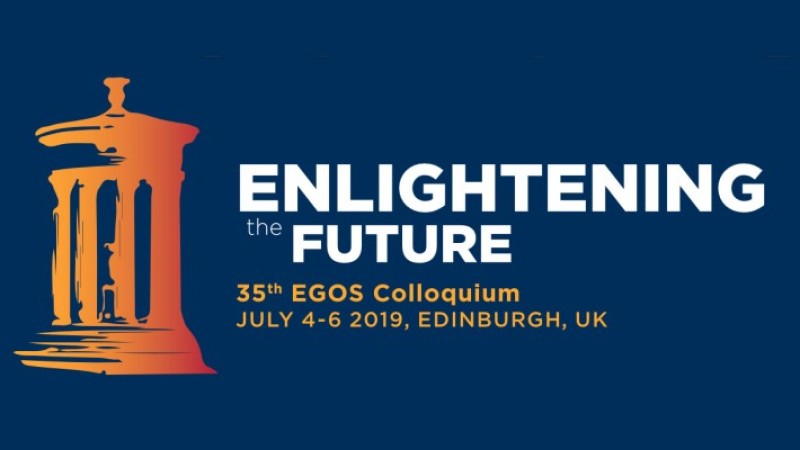Sub-theme 05: [SWG] Organization as Communication: Exploring the Communicative Incarnation of Organization
Call for Papers
Over the past years, the idea that communication plays a constitutive and formative role in creating organization and organizing
has gained increasing momentum in management and organization studies. This scholarly perspective has become known under the
notion of “communication as constitutive of organization” (or, in short, CCO); see also the description of EGOS Standing Working
Group (SWG) 05: Organization as Communication.
From a CCO viewpoint, organization and organizing can arise spontaneously out of communicative interactions of various kinds.
In this regard, CCO scholarship puts forth a “low threshold” view on what an organization is (Schoeneborn et al., in press).
However, even if CCO scholars emphasize the emergent and ephemeral character of organization, most of their empirical research
is still centered on well-established forms of organizations (e.g., large business firms, governmental, or non-governmental
organizations).
In this sub-theme, we suggest switching the focus of attention to the communicative beginnings
of organization; in other words, the aim is to explore how organizational phenomena initially emerge and gain a continued
existence through talk and text. This may involve, for instance, studying the constitutive and formative role of communication
in the early stage of entrepreneurial business ventures (e.g., Cornelissen & Clarke, 2015) or in allowing for the rise
of new and alternative forms of (self-)organizing (e.g., Cnossen, 2018; Dobusch & Schoeneborn, 2015). This can also entail
looking in particular at the role of space and materiality in the incarnation of organizations (e.g., Cnossen & Bencherki,
in press; Wilhoit & Kisselburgh, in press).
At the same time, a focus on the incarnation (as well as continuous
re-incarnation) of organization via communication can also include looking at well-established organizational settings – but
with a particular emphasis on the creative and innovative potential of communication (Martine & Cooren, 2016) in giving
rise to and in institutionalizing novel organizational practices, processes, or routines (cf. Wright, 2016). In this regard,
the sub-theme also offers opportunities to combine CCO scholarship with neighboring theoretical streams in management organization
studies, for instance, in blends like “communicative institutionalism” (see Cornelissen et al., 2015) or by revealing the
communicative underpinnings of process or practice views on organization (see Schoeneborn et al., 2016).
We
are inviting paper submissions that address the particular focus of the sub-theme – or that are concerned with the constitutive
and formative relations between communication and organization more generally. Below is a list of indicative, but not exhaustive,
topics and questions related to the sub-theme:
At what point does communication become “organizational”?
How can we theorize the creative and foundational potential of communication?
How can something as ephemeral and processual as communication lead to the formation of more stable organizational phenomena?
How to overcome the chicken-or-egg problem to theorize the constitutive relation between communication and organization without presuming the pre-existence of organization in the first place?
What is the role of communication in creating new business ventures or alternative forms of organizing – and in institutionalizing novel and innovative practices as part of more established organizational settings?
How can we better understand under what conditions communication is likely to remain “just talk” or is likely to have stronger performative effects, in the sense of generating traction and bindingness among organizational members?
How can we expand CCO scholarship in fruitful ways and make it suitable to study the emergence and perpetuation of processes, practices, or routines?
References
- Cnossen, B. (2018): “Creative work, self-organizing and autonomist potentiality: Snapshots taken from Amsterdam’s art factories.” European Journal of Cultural Studies, first published online on August 6, 2018, http://journals.sagepub.com/doi/10.1177/1367549418786411
- Cnossen, B., & Bencherki, N. (in press): “The role of space in the emergence and endurance of organizing: How independent workers and material assemblages constitute organizations.” Human Relations.
- Cornelissen, J.P., & Clarke, J.S. (2010): “Imagining and rationalizing opportunities: Inductive reasoning and the creation and justification of new ventures.” Academy of Management Review, 35 (4), 539–557.
- Cornelissen, J.P., Durand, R., Fiss, P., Lammers, J., & Vaara, E. (2015): ”Putting communication front and center in institutional theory and analysis.” Academy of Management Review, 40 (1), 10–27.
- Dobusch, L., & Schoeneborn, D. (2015): “Fluidity, identity, and organizationality: The communicative constitution of Anonymous.” Journal of Management Studies, 52 (8), 1005–1035.
- Martine, T., & Cooren, F. (2016): “A relational approach to materiality and organization: The case of a creative idea.” In: L. Introna, D. Kavanagh, S. Kelly, W. Orlikowski & S. Scott (eds.): Beyond Interpretivism? New Encounters with Technology and Organization). Cham, Switzerland: Springer, 143–166.
- Schoeneborn, D., Vásquez, C., & Cornelissen, J. (2016): “Imagining organization through metaphor and metonymy: Unpacking the process-entity paradox.” Human Relations, 69 (4), 915–944.
- Schoeneborn, D., Kuhn, T.R., & Kärreman, D. (in press). “The communicative constitution of organization, organizing, and organizationality.” Organization Studies, first published online on July 18, 2018, http://journals.sagepub.com/doi/10.1177/0170840618782284
- Wilhoit, E.D., & Kisselburgh, L.G. (in press): “The relational ontology of resistance: Hybridity, ventriloquism, and materiality in the production of bike commuting as resistance.” Organization, first published online on August 13, 2017, http://journals.sagepub.com/doi/abs/10.1177/1350508417723719
- Wright, A. (2016): “Organizational routines as embodied performatives: A communication as constitutive of organization perspective.” Organization, 23 (2), 147–163.


